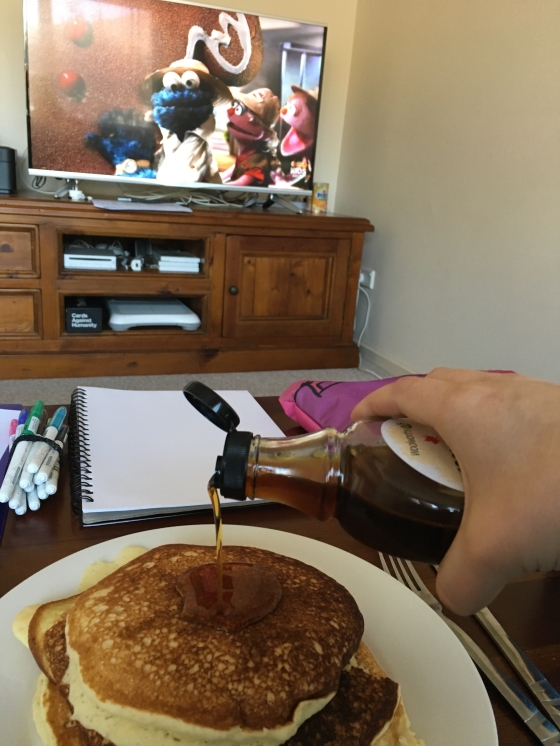A few weeks ago Miss 5 was insistent that we have pancakes for lunch. Having the sweet tooth that she does they were served covered in copious amounts of maple syrup. After devouring them (and more sugar than we ever needed!) she watched Sesame Street on TV.

When Sesame Street finished Miss 5 disappeared back inside, and Miss 7 came out to watch the show that was on next. Miss 7 stuck around for several different kids shows, then also disappeared back inside. Then Miss 3C came out and quietly watched another TV show.
In between all the TV watching that was going on different parts wrote in our journal. Lots of conversation was had, and a few issues raised to discuss in therapy. It turned out to be an incredibly productive afternoon.
Given how helpful it was, we tried it again a week or so later. This time Miss 7 got to help with making the pancakes, and thankfully, there was less maple syrup involved! Then, as with the week before, there were more kids TV shows, lots of journalling, and talking inside.
Now we’re waiting for groceries to be delivered so we have the ingredients to make more pancakes. This time Miss 21 is going to be making the pancakes. Before she starts cooking I’ll get out our journal, pens, pencils, and other art supplies. Then, once we’ve eaten, anything goes.
Allowing time for everyone to come out has been really helpful. There aren’t any rules aside from keeping the body safe, and not leaving the house. Older parts, myself included, are always around to help out if need be. Younger parts can play with their toys, draw, watch TV, or write with help from others.
The other part we’ve had to be careful of is making sure we’re home alone. We have a lovely housemate, but they don’t know the extent of our mental health issues. We’ve mentioned depression and anxiety to them, but nothing about trauma, dissociation, or DID. These pancake afternoons are very carefully planned to make sure we’re alone, and won’t be interrupted.

